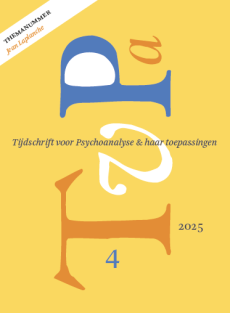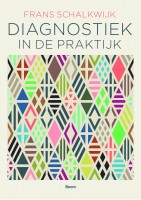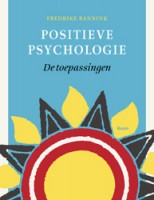Oppositionele kinderen in analytische therapie: van steun naar conflictwerk
Summary
Oppositional defiant children in analytic therapy: from support to inner conflict
Oppositional defiant disordered children differ from children with antisocial conduct disorders, although for too long both diagnoses were considered synonymous. Recent emotion regulation research illustrates similarities and differences between odd children and depressed children on the one hand, and odd children and antisocial children on the other. Structural diagnostic perspectives bring out crucial conflictive and adaptive aspects of odd that are underemphasized in descriptive dsm categories. Etiological perspectives on oppositional behaviour can be found in classical psychosexual development theories and in separation/individuation perspectives. This article illustrates how affect regulation-oriented child psychotherapy and mentalization-promoting methods are helpful in reaching the affect and work through inner conflicts. With odd children, these ends can be reached only after prolonged periods of externalizing behaviour, projective mechanisms and attacks on linking have been survived. These serve as defences against unbearable emotional experiences in the realm of narcissistic vulnerability.
Literatuur
- Adam, F. (2001). Waarom ik altijd nee zeg. Amsterdam, Antwerpen: Querido.
- Akhtar, S., Parens, H. & Kramer, S. (1991). Beyond the symbiotic orbit Advances in separation-individuation theory. Hillsdale NJ: Jason Aronson / The Analytic Press.
- Bleiberg, E. (2001). Treating personality disorders in children and adolescents A relational approach. New York / Londen: Guilford Press.
- Boylan, K., Vaillancourt, T., Boyle, M. & Szatmari, P. (2007). Comorbidity of internalizing disorders in children with oppositional defiant disorder. European Journal of Child and Adolescent Psychiatry, 10, 624-633.
- Chethik, M. (1989). Techniques of child therapy Psychodynamic strategies. New York: Guilford Press.
- Cluckers, G., Gijsen, E., Monthaye, M. & Smis, M. (1982). Op weg met de therapeut Inleiding in de psychoanalytische kindertherapie. Deventer: Van Loghum Slaterus.
- Cluckers, G., Meykens, S. & Monthaye, M. (1986). Steungevende kinderpsychotherapie: een andere weg. Deventer: Van Loghum Slaterus.
- Cluckers, G. (red.) (1994). Andere therapeuten, andere wegen Variaties op het thema Ik-steun. Leuven / Apeldoorn: Garant.
- Earls, F. & Mezzacappa, E. (2002). Conduct and oppositional disorders. In M. Rutter & K. Taylor (red.), Child and adolescent psychiatry (p. 419-433). Oxford: Blackwell.
- Flapan, D. & Neubauer, P.B. (1979). The assessment of early child development. New York: Jason Aronson.
- Fonagy, P., Gergely, G., Jurist, E.L. & Target, M. (2002). Playing with reality: developmental research and a psychoanalytic model for the development of subjectivity. In P. Fonagy, G. Gergely, E. L. Jurist & M. Target (red.), Affect regulation, mentalisation, and the development of the self (p. 253-289). Londen: Karnac.
- Jonghe, F. de, Rijnierse, P. & Janssen,R. (1992). The role of support in psychoanalysis. Journal of the American Psychoanalytic Association, 40, 475-499.
- Kazdin, A.E. & Weisz, J.R. (2003). Evidence-based therapies for children and adolescents. New York: Guilford Press.
- Kernberg, P.F., & Chazan, S.E. (1991). Children with conduct disorders A psychotherapy manual. New York: Basic Books.
- Klitzing, K. von, Kelsay, K. & Emde, R.N. (2003). The structure of 5-year-old childrens play narratives within the MacArthur Story Stem Methodology. In R. N. Emde, D. P. Wolf & D. Oppenheim (red.), Revealing the inner worlds of young children (p. 106-127). Oxford: University Press.
- Mahler, M., Pine, F. & Bergman, A. (1975). Separation-individuation The psychological birth of the human being. New York: Jason Aronson.
- Matthys, W. (1985). Objectconstantie: de theorie van de normale ontwikkeling. Tijdschrift voor Psychiatrie, 27, 256-271.
- Meurs, P. (2004). Gevoelsambivalentie Het wonderlijke samenspel tussen liefde en agressie. Tielt: LannooCampus.
- Meurs, P. & Vliegen, N. (m.m.v. Emde, R., Osofsky, J. & Butterfield, P.) (2008). Affectinterpretatie en emotieregulatie: I Feel Pictures test. Tielt: LannooCampus.
- Mullin, B.C. & Hinshaw, S.P. (2007). Emotion regulation and externalizing disorders in children and adolescents. In J. J. Gross (red.), Handbook of emotion regulation (p. 523-451). New York: Guilford Press.
- PDM Task Force (2006). Psychodynamic Diagnostic Manual. Silver Spring MD: Alliance of Psychoanalytic Organizations.
- Quinodoz, J.-M. (1991). La solitude apprivoisée. Parijs: PUF.
- Verheugt-Pleiter, J.E., Schmeets, M.G. & Zevalkink, J. (2005). Mentaliseren in de kindertherapie Leidraad voor de praktijk. Assen: Van Gorcum.
- Vliegen, N. & Cluckers, G. (1995). Waar wegen scheiden Pijn en rijkdom van separatiemomenten in psychoanalytische kinderpsychotherapie. Kinder-en jeugdpsychotherapie, 22, 177-194.
- Willock, B. (1990). From acting out to interactive play. Journal of Psychoanalysis, 71, 321-334.
- Winnicott, D.W. (1946). Some psychological aspects of juvenile delinquency. In C. Winnicott, R. Sheperd & M. Davis (red.) (1984), Deprivation and delinquency (p. 113-119). Londen: Tavistock.
- Winnicott, D.W. (1956). The antisocial tendency. In D. W. Winnicott, Through Paediatrics to Psycho-analysis: collected papers (p. 58-62). Londen: Tavistock.
 © 2009-2025 Uitgeverij Boom Amsterdam
© 2009-2025 Uitgeverij Boom Amsterdam
ISSN 1382-516x
De artikelen uit de (online)tijdschriften van Uitgeverij Boom zijn auteursrechtelijk beschermd. U kunt er natuurlijk uit citeren (voorzien van een bronvermelding) maar voor reproductie in welke vorm dan ook moet toestemming aan de uitgever worden gevraagd:
Behoudens de in of krachtens de Auteurswet van 1912 gestelde uitzonderingen mag niets uit deze uitgave worden verveelvoudigd, opgeslagen in een geautomatiseerd gegevensbestand, of openbaar gemaakt, in enige vorm of op enige wijze, hetzij elektronisch, mechanisch door fotokopieën, opnamen of enig andere manier, zonder voorafgaande schriftelijke toestemming van de uitgever.
Voor zover het maken van kopieën uit deze uitgave is toegestaan op grond van artikelen 16h t/m 16m Auteurswet 1912 jo. Besluit van 27 november 2002, Stb 575, dient men de daarvoor wettelijk verschuldigde vergoeding te voldoen aan de Stichting Reprorecht te Hoofddorp (postbus 3060, 2130 KB, www.reprorecht.nl) of contact op te nemen met de uitgever voor het treffen van een rechtstreekse regeling in de zin van art. 16l, vijfde lid, Auteurswet 1912.
Voor het overnemen van gedeelte(n) uit deze uitgave in bloemlezingen, readers en andere compilatiewerken (artikel 16, Auteurswet 1912) kan men zich wenden tot de Stichting PRO (Stichting Publicatie- en Reproductierechten, postbus 3060, 2130 KB Hoofddorp, www.cedar.nl/pro).
No part of this book may be reproduced in any way whatsoever without the written permission of the publisher.
Nieuwsbrief Boom Psychologie
Meld u nu aan en ontvang maandelijks de Boom Psychologie nieuwsbrief met aantrekkelijke aanbiedingen en de nieuwe uitgaven.
Aanmelden


